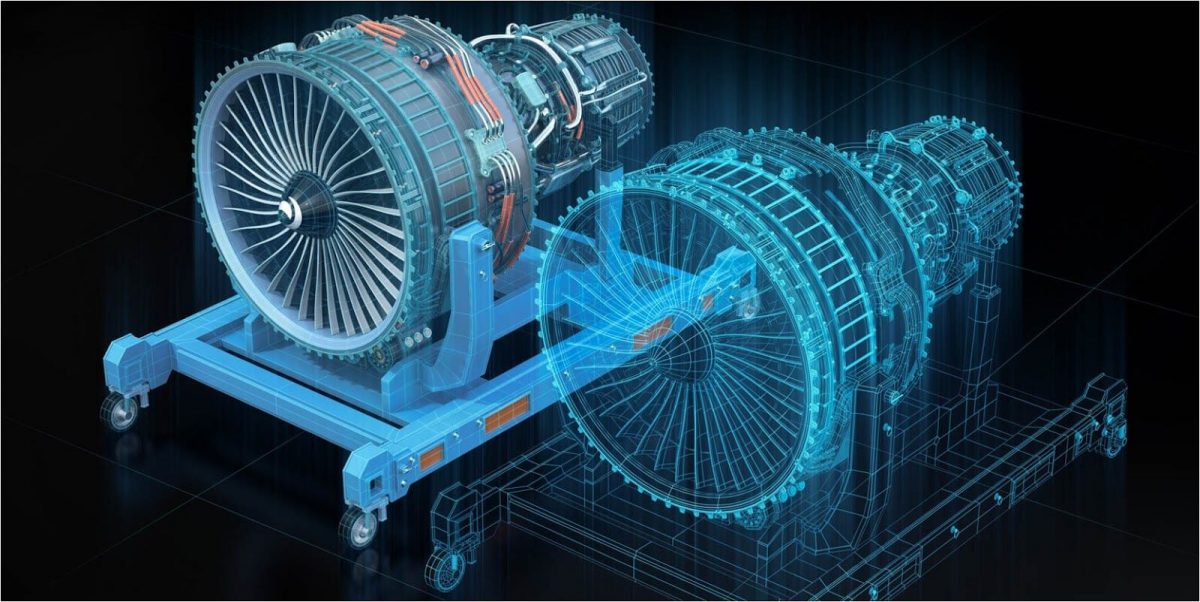The use of digital twins in organizations is transforming decision-making and operational management: they allow organizations to anticipate real life situations, help investigate solutions at reduced risk, and improve customer experiences.
Artificial intelligence (AI) is quickly becoming a necessity in businesses. AI and machine learning (ML) are crucial business technologies that assist innovative companies in improving process efficiency, customer experiences, and decision-making. Businesses have employed digital twins extensively over the past few years. A digital twin is an exact virtual copy of reality, so data from reality is also fed into the twin. By continuously entering real-time data, the model changes along with reality and it becomes possible not only to show reality, but also to make predictions (Batty, 2018). In other words: it is a combination of the elements of reality supplemented with the dynamics of reality. For greater operational knowledge, they may virtually replicate physical systems, environments and products (Batty, 2018). They also have enabled organizations to examine business strategies and creative business models. As AI and ML technologies have grown and as the cloud’s scalability has evolved, the use of digital twins has begun to accelerate. According to a recent survey by PwC, it is indicated that that 96% of US firms currently anticipate using AI simulations this year (PwC, 2022).
Many businesses want to go beyond employing digital twins to predict real-time insights on existing performance. Instead, they want to simulate and anticipate human behavior to assess potential future scenarios. They are generating simulation knowledge that is already found in operating systems by merging scientific computing, simulations, and AI. The development of digital twins into simulations knowledge enables speedy and macro-scalable forecasting that is directly adopted into corporate analytics and IT structures. This enables the simulation of incredibly complicated systems. Using a digital twin, you may test every choice option to determine which outcomes are the best. The time or cost necessary for real-world experimentation are not a problem anymore (El Saddik, 2018).
AI Simulations in Practice
Artificial intelligence simulations are revolutionizing how we conduct business these days through disruptive practical uses. According to the abovementioned survey, AI simulations are used to predict market dynamics (57%), enhance supply chains (54%) discover markets (54%), and improve recruitment (39%) (PwC, 2022). While digital twins can simulate real-life settings, AI simulations can go further than this. By simulating a vast number of alternative situations simultaneously and applying highly sophisticated “humanized” reasoning to them, AI simulation systems may project expected events and outplay real-life actions without taking the risks associated with them (Pettey, 2017). In the extremely rapidly changing and competitive landscape of today, this is a big advantage. The key to success is the ability to implement AI simulations at the scale necessary to provide advantage. In order to do this, organizations must incorporate simulations into their overall operations (El Saddik, 2018).
- Batty, M. (2018). Digital twins. Environment and Planning B: Urban Analytics and City Science, 45(5), 817-820.
- El Saddik, A. (2018). Digital twins: The convergence of multimedia technologies. IEEE multimedia, 25(2), 87-92.
- Pettey, C. (2017). Prepare for the impact of digital twins. Gartner report from: https://go-nature-com.eur.idm.oclc.org/2krzbjd
- PwC. (2022). PwC 2022 AI Business Survey. From PwC: https://www.pwc.com/AI2022
- Tao, F., & Qi, Q. (2019). Make more digital twins.

